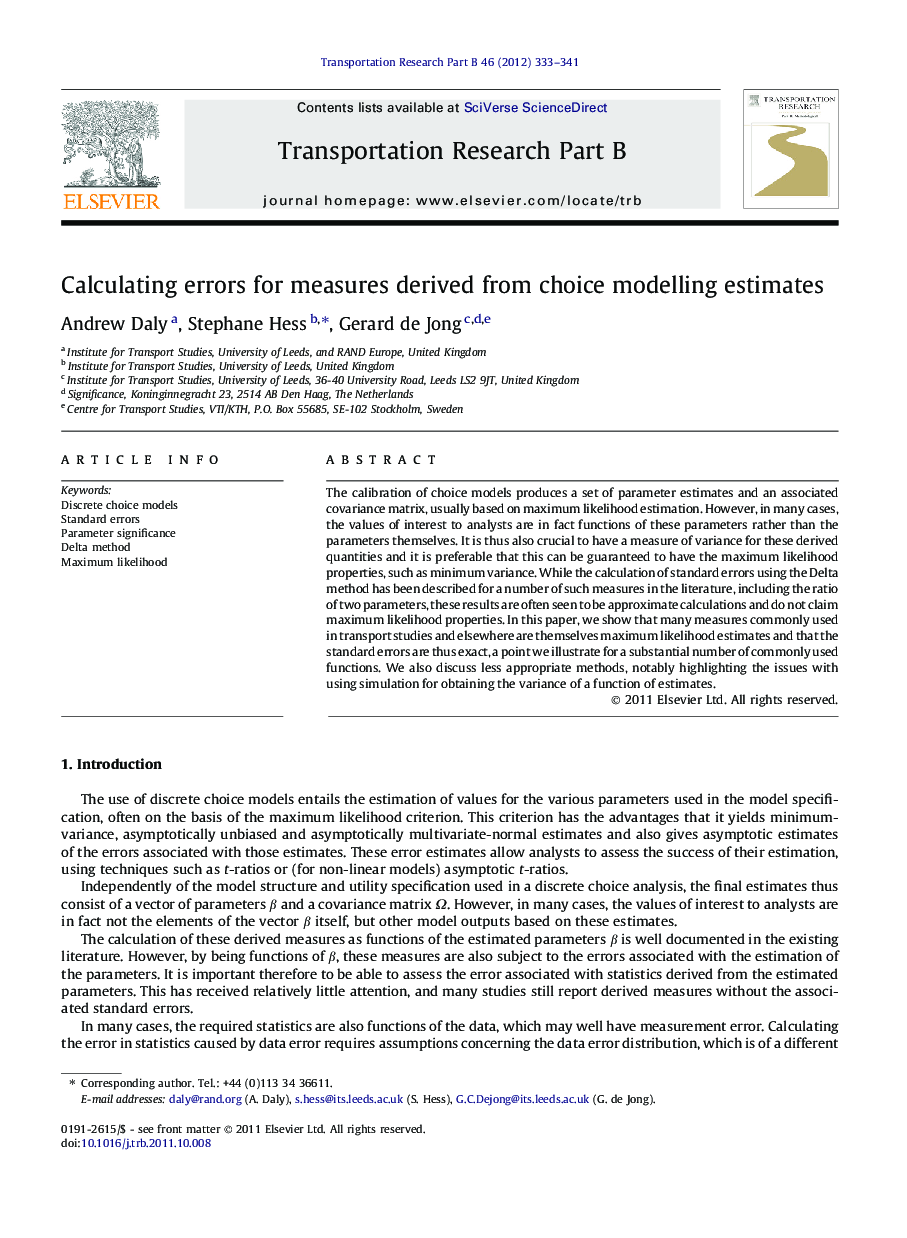| Article ID | Journal | Published Year | Pages | File Type |
|---|---|---|---|---|
| 1132247 | Transportation Research Part B: Methodological | 2012 | 9 Pages |
The calibration of choice models produces a set of parameter estimates and an associated covariance matrix, usually based on maximum likelihood estimation. However, in many cases, the values of interest to analysts are in fact functions of these parameters rather than the parameters themselves. It is thus also crucial to have a measure of variance for these derived quantities and it is preferable that this can be guaranteed to have the maximum likelihood properties, such as minimum variance. While the calculation of standard errors using the Delta method has been described for a number of such measures in the literature, including the ratio of two parameters, these results are often seen to be approximate calculations and do not claim maximum likelihood properties. In this paper, we show that many measures commonly used in transport studies and elsewhere are themselves maximum likelihood estimates and that the standard errors are thus exact, a point we illustrate for a substantial number of commonly used functions. We also discuss less appropriate methods, notably highlighting the issues with using simulation for obtaining the variance of a function of estimates.
► Discusses the calculation of errors in functions of estimated parameters of choice models. ► Shows that the Delta method has a more fundamental interpretation as a maximum likelihood calculation. ► Provides formulae for many functions occurring in practical choice modelling. ► Illustrates failure of sampling approach for calculating errors in ratio estimate.
